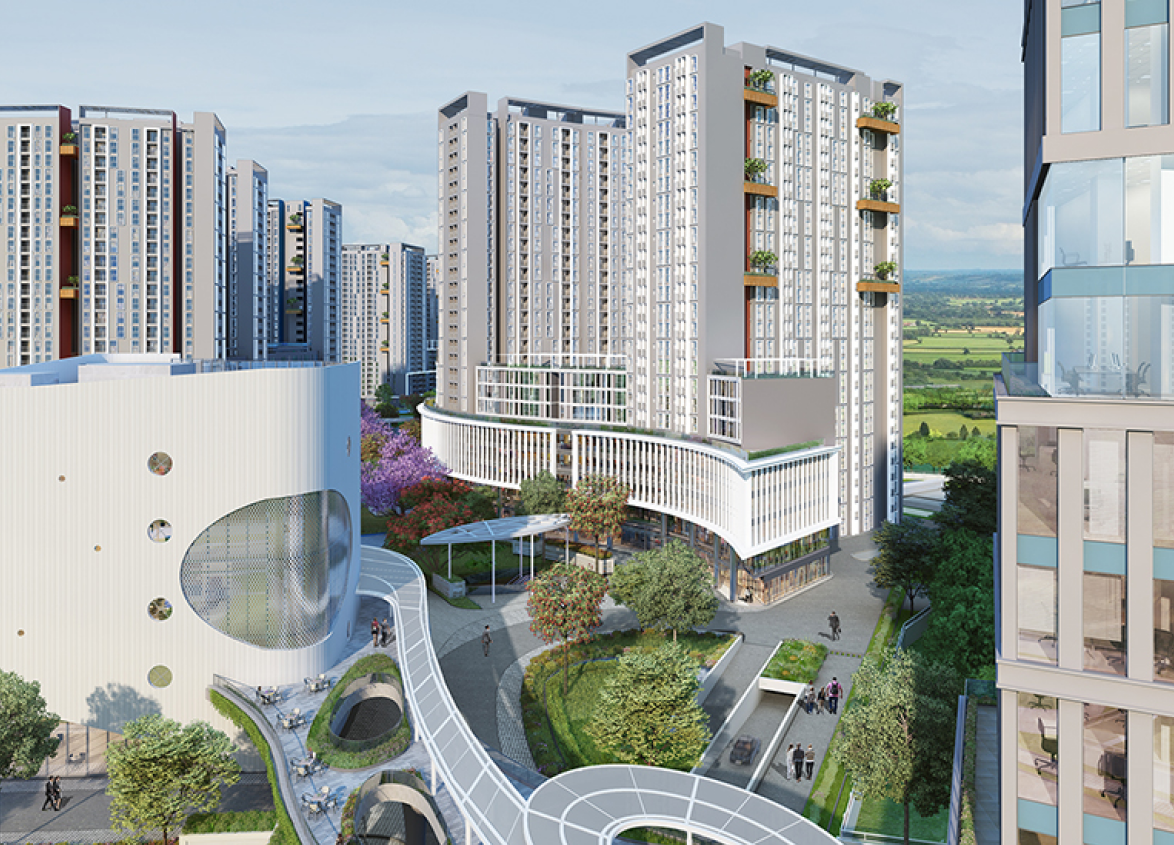
Commercial
Non-Metros to Be the Next Growth Drivers for Commercial Real Estate
May 14, 2021
The Commercial Real Estate sector in India is undergoing a metamorphosis of sorts. The office market, notably, which reached its peak in 2019, was significantly impacted by Covid-19 and the ensuing lockdown. In 2020, the net absorption of office spaces witnessed around a 45% drop to 25.5 million sq. ft., while new completions stood at 36.4 million sq. ft., a fall of 27%.
As a result, real estate players were forced to rethink their strategies as consumer demand changed. Several Covid-19 precautions were retrofitted to existing properties. New properties needed to be quickly adapted to meet new industry standards as the industry's resilience was at stake.
This blog will cover the effects of Covid-19 on real estate, the impact of remote working, and the resurgence in commercial real estate space.
Ups and downs
With the gradual opening of the economy post the lockdown, the country's overall office real estate market in Q3 of 2020 grew by around 64% against the second quarter of 2020. The growth of the commercial real estate sector can be attributed to its strong fundamentals. Bengaluru and Hyderabad led in the overall absorption, with Bengaluru contributing more than 30% of the total office space absorption in the country and more than 9 million sq. ft. precommitment.
Much of the absorption was driven by the industrial, manufacturing, healthcare, and e-commerce sectors. The roll-out of the vaccine is expected to provide further impetus to the sectors.
The industry expects to see the shift from large, consolidated work areas to a hub and spoke model that includes home offices, flexible workspace, satellite offices, and central headquarters in the coming quarters. While work-from-home ensured business continuity during the lockdown, employers realized the scope for accomplishing remote working was more widespread and feasible than previously thought.
Remote work and non-metros
IT companies, which comprise about 40 percent of office lessees in India, while adopting innovative hybrid working options that involved reduced floor space apart from permanent work from home, realised that employees, mainly from non-metro cities, faced challenges of connectivity, bandwidth, and the physical impossibility of incorporating a work area at home over a long period. Organisations are now increasingly looking at tying up with coworking spaces or setting up serviced office spaces. This phase also noticed a trend where employees who had moved to Tier 1 cities for employment moved back to their Tier 2/3 locations to work from home. This reverse migration revealed that employees would prefer to work from Tier 2/3 cities if given an opportunity.
The advantages of the remote work
- Remote working also allowed organisations to tap talent from a larger pool, for example, women who had taken maternity breaks, individuals who had to take care of the elderly at home, etc.
- New job culture led to an increase in job satisfaction and lower attrition, and thereby increased productivity.
- This trend will provide opportunities for prominent real estate players to expand their operations in non-metro cities.
Prominent players with their experience in running high-end Grade A office spaces for information technology companies and other services companies will have the edge over other players. IT companies require particular building specifications such as secured high-speed data connection plug-and-play features, etc.
Is coworking space worth it?
Currently, many of the coworking spaces are focused on high-end markets. Still, with consumers moving back to non-metros and small business CEOs trying to minimize expenses, coworking spaces have emerged as the obvious choice. As coworking spaces enter different geographical locations, developers are likely to change the price of their products and services offered to remain competitive. Additionally, satellite offices in non-metro cities will also drive institutional investments in data centres in these locations. These centres must provide highly robust data infrastructure, including uninterrupted and secured high-speed connections in these locations.
For a market that is expected to outperform itself in the next five to six years and provide an investment opportunity of more than $5 billion by 2025, data centres in non-metro cities will play a fundamental role in the growth of this sector. This expected growth can be credited indirectly to the pandemic, which forced businesses to change strategies to explore various new models. Change is constant, and it is only companies that are agile that can script success.
Subrata K C Sharma,
COO, Commercial, Brigade Group
Appeared in Financial Express: https://bit.ly/3yt9ARv
MUST READ
Looking for something specific?
We'd be delighted to help you.




































































































































































































































































































































































































































